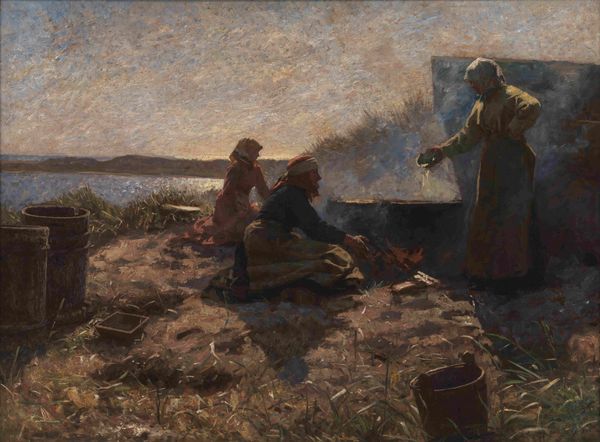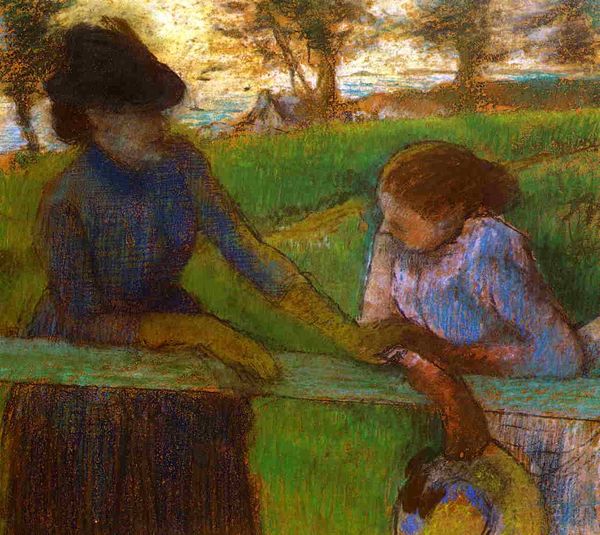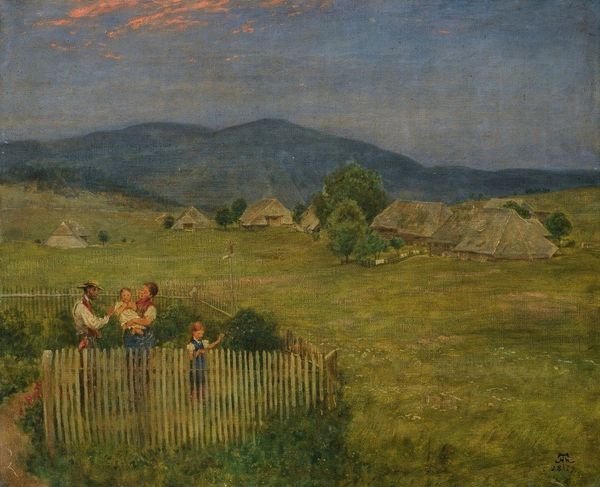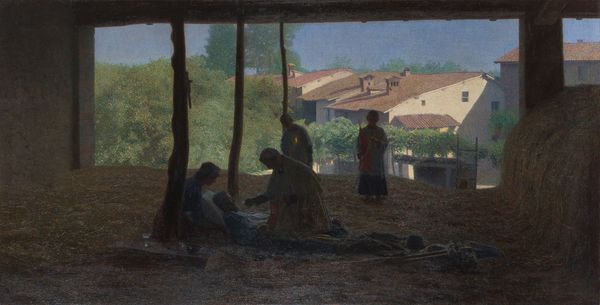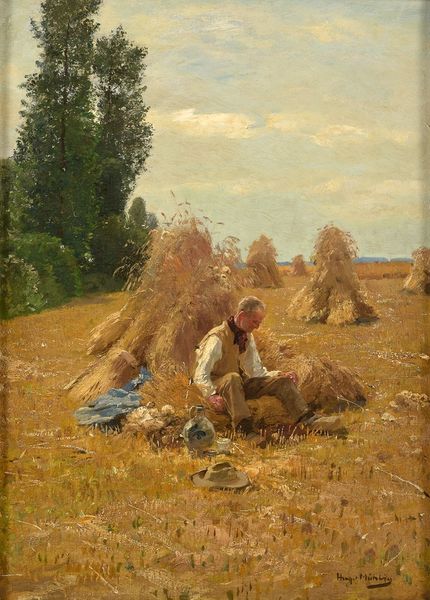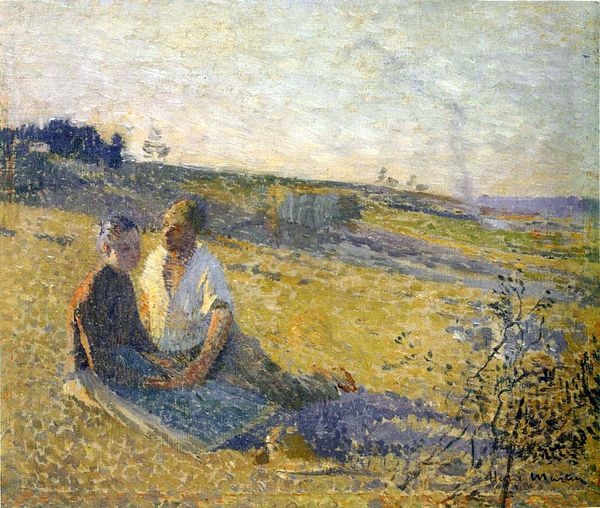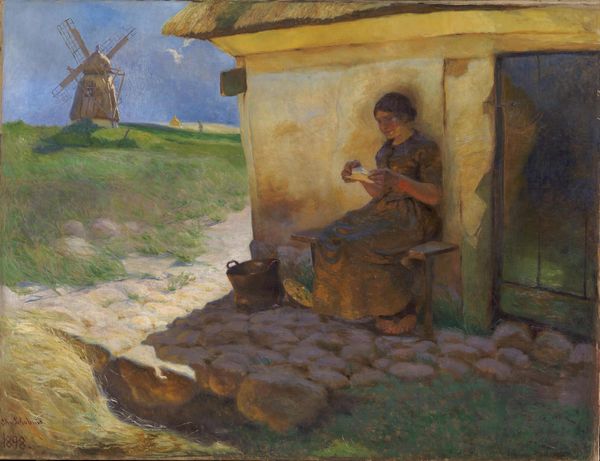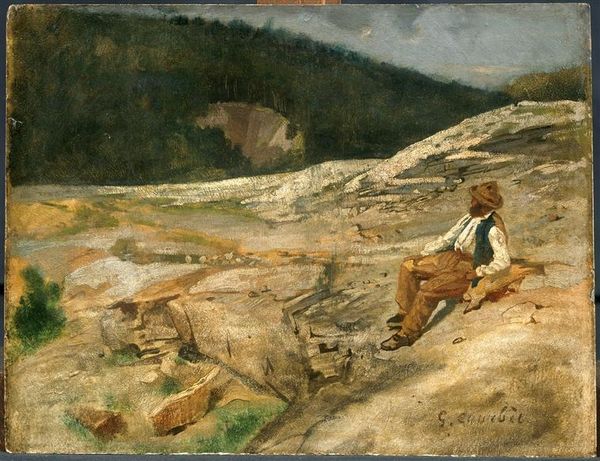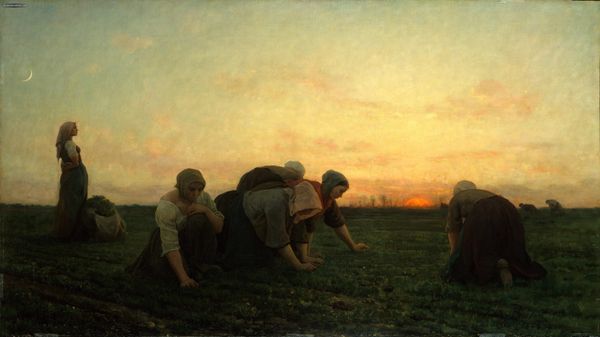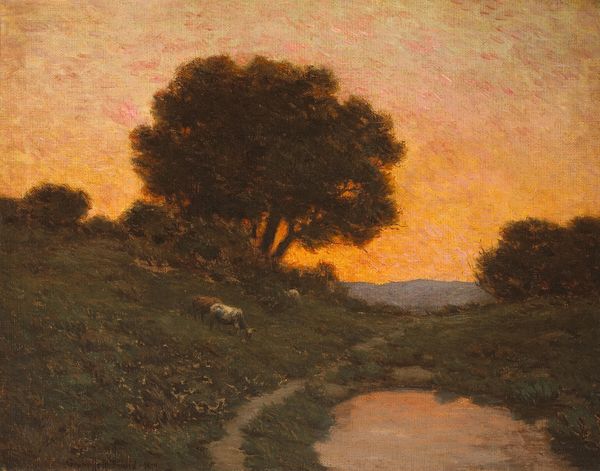
painting, oil-paint, impasto
#
painting
#
oil-paint
#
neo-impressionism
#
landscape
#
figuration
#
impasto
#
group-portraits
#
painting painterly
#
genre-painting
#
post-impressionism
#
realism
Dimensions: 127 x 164 cm
Copyright: Public domain
Curator: "Looks Tired" by Pellizza da Volpedo, completed in 1906. Volpedo, an Italian painter associated with both Neo- and Post-Impressionism, uses oil paint and impasto to portray what appears to be a group of fieldworkers. Editor: Tired indeed. The overall tonal range is muted, almost exhausted, reflecting weariness. Notice how the thick impasto strokes give the figures a weight and texture. It speaks of hardship, wouldn’t you agree? Curator: Precisely. The visual language employed conveys a very specific message. The figures dominate the foreground, drawing the eye into their worn state, while the landscape with mountain ridge, painted in soft hues, provides a somewhat detached backdrop. This creates a certain tension—between labor and the land that both feeds and exhausts them. Editor: And that Post-Impressionist brushstroke, not quite Pointillist but still distinct—how does it influence the painting's affect? Is it just about stylistic novelty, or is it also a statement about social conditions? Curator: The painterly style, in a way, reinforces the sense of raw realism but then elevates the visuality into Post-impressionist movement through the manipulation of light and form with the application of impasto. It invites you, demands even, to confront the subject's presence while also maintaining a slight distance, it avoids sentimentality in its rendering. Editor: Yet, it's a social scene that seems carefully arranged—almost theatrical in its staging. A narrative unfolds of rural existence in the turn of the century with themes around landscape, group portrait, and genre-painting. The museum, I am sure, places great value on these subjects. Do you think its accessibility also lends to its power as a piece that can create discourse? Curator: Undoubtedly. These individuals almost seem suspended. They exist with the weight of exhaustion, which translates beyond a surface-level, and invites you into its visual structure through colour and brushstrokes. Editor: Ultimately, what strikes me most is how the composition evokes both the specificity of a particular time and place, while offering an analysis into how painterly impasto might contribute towards empathy when viewing workers during a particular period.
Comments
No comments
Be the first to comment and join the conversation on the ultimate creative platform.

